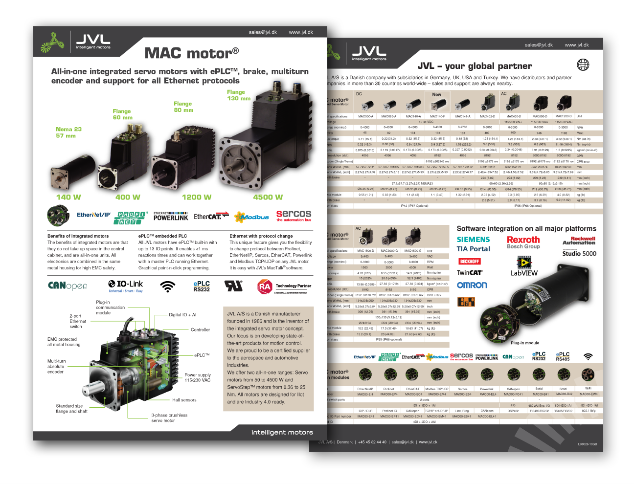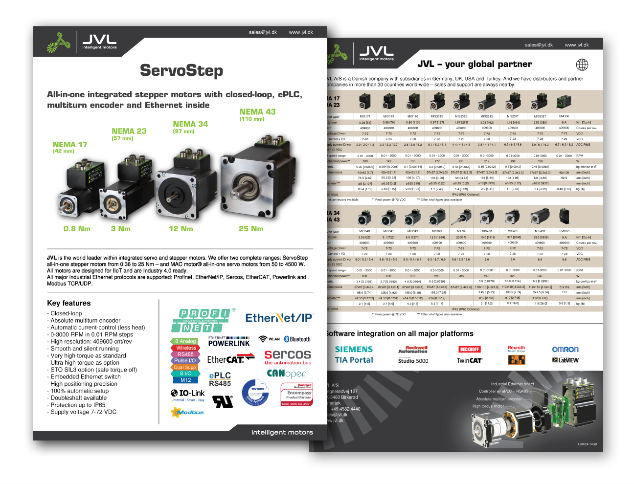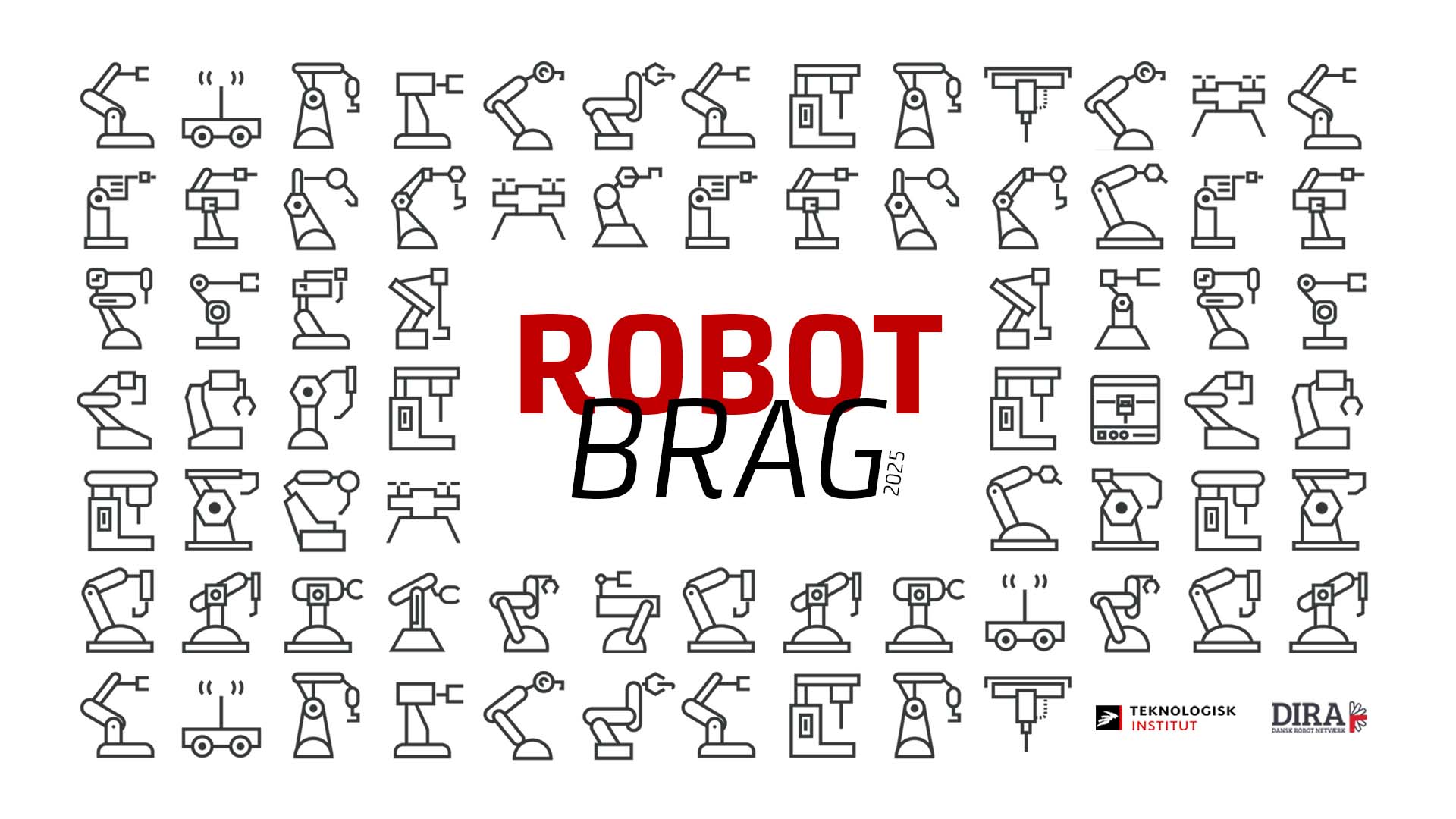
JVL integrated servo motors in huge radio telescope array in Chile
|
Radiotelescope array with 63 large antennas uses JVL integrated motors in amplitude calibration devices.
In the late 2008 JVL received an order from our spanish distributor Elmeq S.L. for motors for a huge radiotelescope (ALMA) to be installed in Chile in South America. The order included 63 pcs. MAC800-D5 integrated servo motors and 63 pcs. MAC140-A1 integrated servo motors.
ALMA
ALMA, the Atacama Large Millimeter/submillimeter Array, one of the largest ground-based astronomy projects of the next decade, is a major new facility for world astronomy. ALMA will be comprised of a giant array of 12-m submillimeter quality antennas, with baselines of several kilometers. An additional, compact array of 7-m and 12-m antennas is also foreseen. Construction of ALMA started in 2003 and will be completed in 2012. The ALMA project is an international collaboration between Europe, Japan and North America in cooperation with the Republic of Chile. Astronomers expect ALMA to make extremely important contributions in a variety of scientific specialties.
1. ALMA will be a premier tool for studying the first stars and galaxies that emerged from the cosmic "dark ages" billions of years ago. These objects now are seen at great cosmic distances, with most of their light stretched out to millimeter and submillimeter wavelengths by the expansion of the Universe.
2. In the more nearby Universe, ALMA will provide an unprecedented ability to study the processes of star and planet formation. Unimpeded by the dust that obscures visible-light observations, ALMA will be able to reveal the details of young, still-forming stars, and is expected to show young planets still in the process of developing.
3. In addition, ALMA will allow scientists to learn in detail about the complex chemistry of the giant clouds of gas and dust that spawn stars and planetary systems. Many other astronomical specialties also will benefit from the new capabilities of ALMA, such as:
- Map gas and dust in the Milky Way and other galaxies.
- Investigate ordinary stars.
- Analyze gas from an erupting volcano on Jupiter's moon, Io.
- Study the origin of the solar wind.
Antennas
The antenna is the heart of ALMA. These are the highest quality radio telescopes ever built, and they must maintain their precise shape under the strains of remote high altitude operation on the Llano de Chajnantor site. The site offers the exceptionally dry and clear sky required to operate at mm/submm wavelengths, but also experiences large diurnal temperature variations and strong midday winds. The ALMA antennas will be more than capable of operating in this extreme environment, enabling ALMA to fully exploit this superb site. The specifications of each antenna are 2 arcsec absolute pointing over the whole sky, 0.6 arcsec tracking, and a 25 micrometer r.m.s. surface accuracy. These are very tight specifications for radiotelescopes exposed to the harsh weather environment at 5050m altitude.
The ALMA Antenna Transporters
The ALMA antennas will be operating at an altitude of 5050 meters. The antenna array can be reconfigured in order to achieve the imaging requirements by relocating antennas on the stations at the Array Operations Site. (°S) There is a compact configuration in which all antennas operate within an area of 160 x 250 meters, and there is an expanded configuration for which the maximum separation between antennas reaches about 15 km. In order to move antennas, each weighing more than 100 tons, the ALMA project has designed a special, dedicated transport vehicle. Two units have been manufactured. These transporters are truly unique. They will first move antennas from their assembly area the OSF, (2900 meters) to dedicated positions at the °S (5000 meters). After the initial move from the OSF they will move antennas around on the °S - to compact or expanded configurations - and position the antennas to an accuracy of a few millimeters. In addition, these transporters shall also move antennas for extended maintenance and repair from the °S to the OSF.
Detector technology
Receiving systems on ALMA will cover the entirety of the electromagnetic spectrum observable from the Earth’s surface from 0.3 mm to 9.6mm in wavelength. At the heart of the receiving system are sensitive superconducting tunnel junction mixers, operating at just 4 Kelvin (269°C below zero). Together, the mixer systems on the ALMA antennas will be the most extensive superconducting electronic receiving system in the world. Signal processing capacity ALMA forms images by continuously combining signals from each antenna with those from every other antenna. There are 1,225 such antenna pairs. From each antenna a bandwidth of 16 GHz will be received from the astronomical object being observed. The electronics will digitize and numerically process these data at a rate of over 16,000 million-million (1.6 x 1016) operations per second. Astronomical images are constructed from the processed data. The JVL Integrated Motors
The JVL integrated servo motors are used for Amplitude Calibration Devices (ACD´s) in the antennas. There are a total of 63 Antennas, each with its cryostat, its receiver bands and its Amplitude Calibration Device. These devices are build by the spanish company NTE S.A.
NTE are famous for the development of outstanding subsystems for world-class astronomical telescopes and their related optical instrumentation. They have specialized in the production of precision pointing and positioning systems for optical components (mirrors, lenses, filters, etc.) These systems are assembled, integrated, characterized and verified in their facilities, for later delivery, calibration and acceptance on-site.
In developing these projects, NTE applies standard frameworks, practices and methods commonly used by the international astronomy community and by organizations such as the European Southern Observatory (ESO).
The JVL MAC motors are controlled with a microcontroller board with a CAN Bus driver and then using the CAN bus and the CANopen protocol to configure and command the motors. |
|
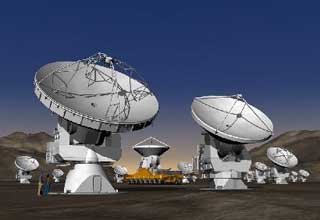 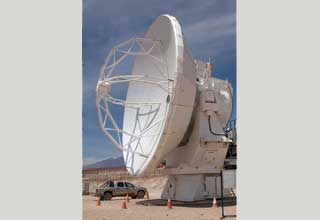  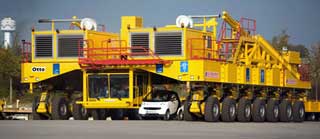 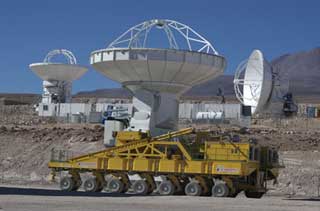 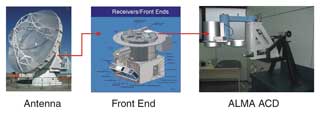 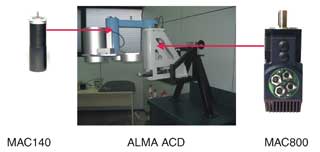 The ALMA Amplitue Calibaration Devices wil be installed 5050 meters above sea level. Here the ambient air pressure is 550mbar ±60mbar and the temperature can vary from -20°C to 40°C.
NTE has chosen the JVL Integrated MAC motors because they fulfilled their torque requirements and because they provided a versatile integrated solution with the motor controller, the motor amplifier and a CAN Bus communication module which simplifies the cabling and allows an easy commanding.
JVL is proud to have been able to contribute to this project and takes it as a proof of our service and the quality and reliability of our products.
Text (partly) and pictures: Courtesy of
www.alm°bservatory.org, www.eso.org. and NLE S.A. |
JVL A/S Bregnerødvej 127 DK-3460 Birkerød Denmark
Tel: +45 4582 4440 Fax: +45 4582 5550 E-mail: jvl@jvl.dk
Tel: +45 4582 4440 Fax: +45 4582 5550 E-mail: jvl@jvl.dk




